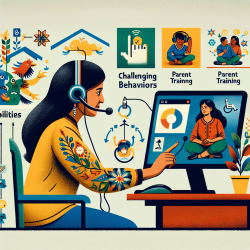Introduction: Acknowledging Children's Despair
As climate change becomes an increasingly pressing issue, children are not immune to its psychological effects. The research article "Exploring children’s despair in the face of climate change" highlights the importance of allowing children to express and explore their feelings of despair. This blog aims to guide practitioners in supporting children through these complex emotions, ultimately fostering resilience and hope.
Understanding Eco-Anxiety and Despair
Eco-anxiety, a term describing the chronic fear of environmental doom, is becoming more prevalent among children. While interventions often focus on fostering hope, it's crucial to recognize the need for children to explore their despair. Ignoring these feelings can lead to a sense of invalidation and increased distress. By acknowledging and discussing these emotions, practitioners can help children develop healthier coping mechanisms.
The Role of Adults in Supporting Emotional Exploration
Adults, including parents, teachers, and therapists, play a pivotal role in supporting children's emotional exploration. By providing a safe space for children to express their concerns, adults can validate their feelings and help them navigate their emotions. This process involves:
- Listening actively and empathetically to children's concerns.
- Encouraging open discussions about climate change and its impact.
- Providing age-appropriate information and examples.
- Helping children identify potential solutions and actions they can take.
Implementing Arts and Philosophy-Based Interventions
The research article introduces an arts- and philosophy-based intervention designed to help children explore their feelings about climate change. This approach allows children to express themselves creatively and engage in philosophical discussions about their emotions and the future. Practitioners can implement similar interventions by:
- Incorporating creative arts like drawing, sculpture, and photovoice.
- Facilitating discussions on topics such as eco-anxiety, responsibility towards nature, and hope for the future.
- Encouraging children to explore both hope and despair in a balanced manner.
Building Resilience and Hope
By exploring despair, children can begin to rebuild hope and resilience. This process involves acknowledging the reality of climate change while also identifying actions that can lead to positive change. Practitioners can support this journey by:
- Helping children understand the structural causes of climate change.
- Encouraging proactive behaviors that contribute to environmental sustainability.
- Providing resources and support for mental health as needed.
Conclusion: Empowering Children for a Sustainable Future
By embracing children's despair and guiding them through their emotional journey, practitioners can empower them to face the challenges of climate change with resilience and hope. This approach not only supports children's mental health but also fosters a generation committed to sustainable practices.
To read the original research paper, please follow this link: Exploring children’s despair in the face of climate change.










